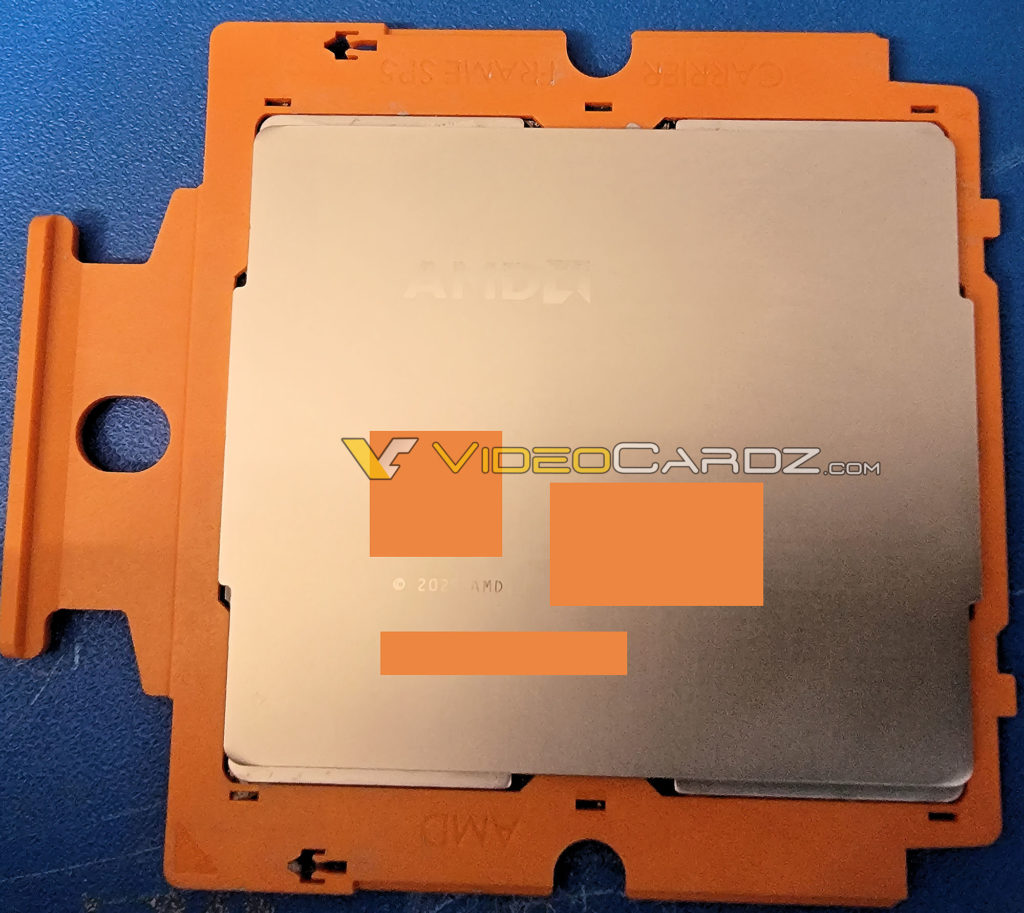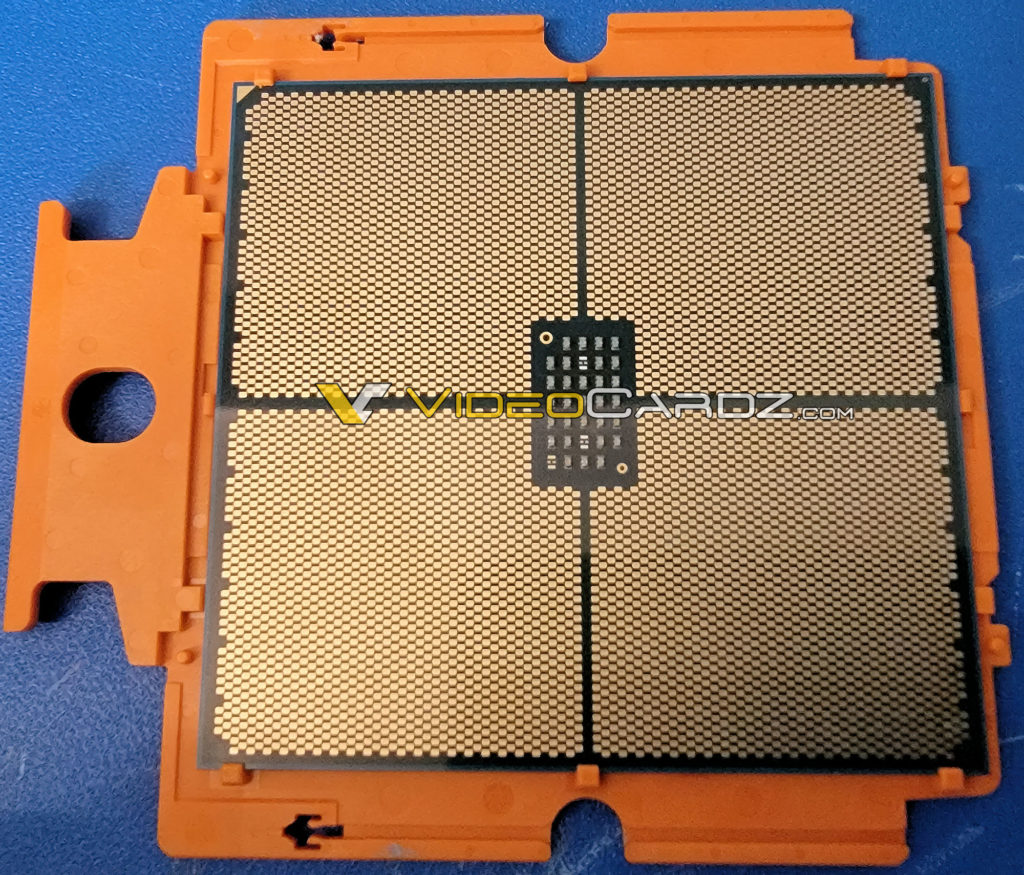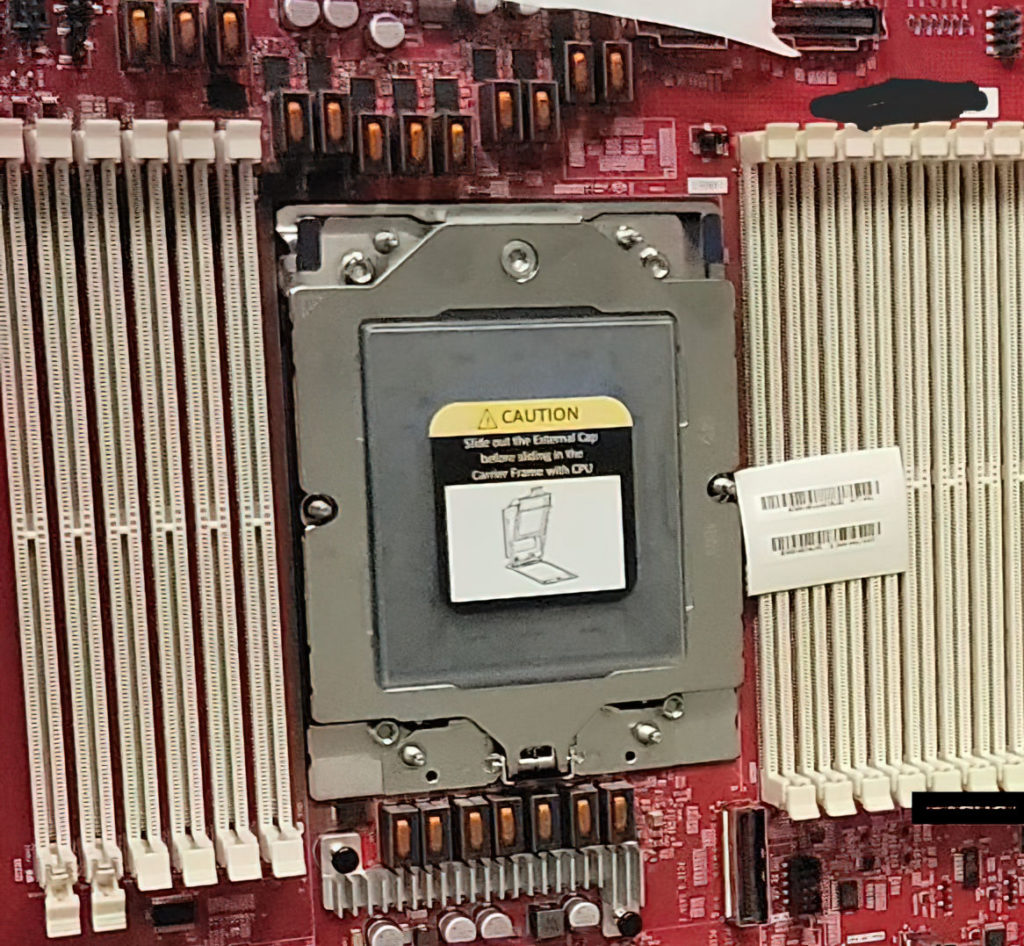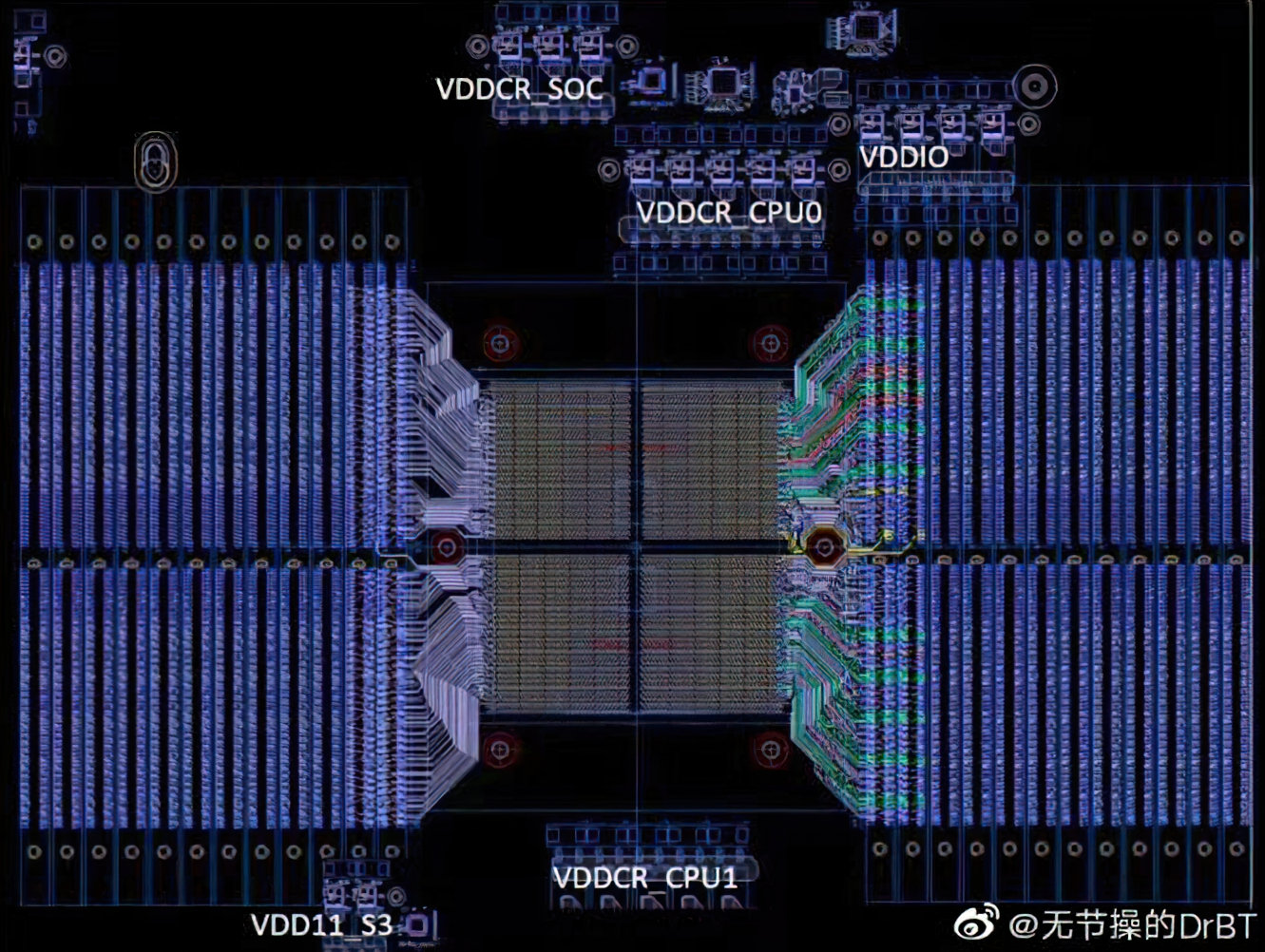Zen 4 CPU chiplets for the first time in a photo, SP5 socket and Genoa server processors with and without IHS
Recently, the first test or sighting of a sample of AMD’s 5nm processor with the new Zen 4 architecture appeared on the Internet. Now we also have the first photo. And not only the processor, but also the silicon – a delidded 96-core Epyc 7004 “Genoa” has made it to the Internet. We have a proof that Zen 4 uses CPU chiplets with eight cores and there will be a whole 12 of them and under the IHS of the processor.
We now have a look at the version of the Zen 4 architecture meant for servers (for the record, AMD also showed a 5nm Ryzen in January, but we only got a top view of the CPU covered by a heat spreader). First, an image of an Epyc 7004 processor sample was leaked, showing both the top and bottom of the processor. The orange plastic in the picture is the carrier used to insert the processor into the socket. A similar assembly is already used by current Epycs and Threadrippers.

As you can see, the heat spreader is very large and the same is true, of course, for the bottom of the processor with the contacts. There should be 6096 of them. The increase compared to the 4094 contacts of current Epyc package is due to the fact that the processor will have a 12-channel DDR5 controller and possibly expanded connectivity. Some of the additional contacts will probably be used to boost the power supply, so that more current can be supplied to the CPU.

But we also have fresh pictures of what’s hidden inside. You can see how the chipsets themselves sit on the CPU substrate below. It looks like the early leak from ExecutableFix was accurate. Once again, the processor has one large central I/O die and twelve CPU chiplets in a slightly counterintuitive arrangement (normally, we’d probably expect AMD to put them closer to the I/O chiplet).

This means that the chiplet interconnect will probably be very similar to the Epyc 7002 and 7003 and uses simple communication wired through the substrate. So unfortunately AMD still hasn’t implemented some sort of more advanced interconnect technology similar to what is employed by Intel’s Sapphire Rapids, or Apple’s M1 Ultra. it is safe to assume this means the same will be true for the desktop Ryzen 7000 “Raphael”.
The area of the CPU chiplet is very small, reportedly 72 mm² (less than the 80 mm² of Zen 3 compute dies; this is likely to lead to higher operating temperatures due to less contact area for cooling). Even the I/O die is smaller (it has an area of 397 mm²) than in the previous generation despite having to support 50 % more interconnects to the CPU dies and 50 % more memory channels. Hopefully this is a confirmation that AMD has used some more modern manufacturing process and hopefully this will reduce the I/O die’s power draw (which negatively offsets the efficiency of the 7nm Zen 2 and Zen 3 cores quite a bit, currently).

Socket and schematics
A picture and schematics of the socket for these processors, which is called SP5, have also been leaked. It’s not entirely clear if existing coolers for today’s SP3/TR4 socket can be used with it. It looks like the new socket has six mounting nuts (but we don’t know if maybe four of them will be in positions compatible with SP3 coolers). For the AM5 desktop socket, AMD designed it so that compatibility with AM4 coolers is retained.

In addition to the Epyc 7004 processors with Zen 4 cores, you should also be able to install “cloud” processors with Zen 4C cores, which is a higher-density version of the architectur with up to 128 cores in total, intended as competition for ARM server CPUs. These processors are codenamed “Bergamo” and should come out a little later. The Epyc 7004 Genoa could hopefully be released as early as late 2022.
English translation and edit by Jozef Dudáš, original text by Jan Olšan, editor for Cnews.cz
⠀









That die shot has bad focus? Or it got optimized out of courtesy to ip? Honestly…even the crosstalk control on the schematic got greeked or maybe patterned.